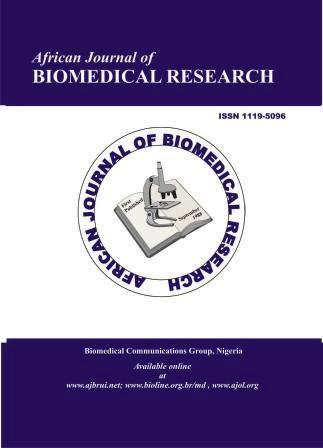Nuclear Respiratory Factor-1 (NRF-1), A Versatile Therapeutic Target: Influence of Plant Metabolites
DOI:
https://doi.org/10.4314/Keywords:
Nuclear respiratory factor-1, Plant metabolites, Mitochondria, Oxidative stress, DiseasesAbstract
Nuclear-encoded transcriptional regulatory proteins called transcription factors can potentially influence mitochondrial gene
expression directly or indirectly. Mitochondria contain their own genome, which encodes 13 of the ∼100 proteins that constitute
the enzyme complexes of the respiratory chain. Mitochondria are the fuel stations of all eukaryotic cells and functions as central
component of mammalian cellular survival through production of ATP and re-oxidized NAD. Nuclear respiratory factor-1 (NRF1) coordinates the expression of nuclear and mitochondrial genes for mitochondrial biogenesis. It increases mitochondrial
respiratory capacity and induces expression of a subset of genes governing mitochondrial activity. It has a major function in
cellular adaptation to energy demands by translating physiological signals into an enhanced capacity for energy production.
Oxidative stress has been implicated in the pathogenesis of many diseases such as diabetes, cardiovascular disease, cancer and
neurodegenerative diseases. NRF proteins are also essential in the upregulation of antioxidant and xenobiotic-metabolizing
enzymes during oxidative stress. NRF-1 plays a role in mediating activation of oxidative stress response genes through
antioxidant response element and hence, confirms its potential roles in chronic diseases. This review has clearly revealed the
versatility of NRF- 1 as a therapeutic target and showed that plants could exhibit their fight against diseases through activation
of NRF-1.










